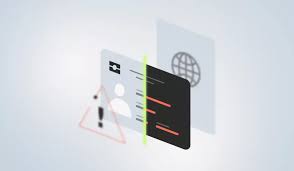security features
Introduction:
In today’s interconnected world, where data flows at lightning speed and cyber threats evolve just as quickly, security is no longer a luxury—it’s a necessity. Whether for individuals, businesses, or governments, ensuring the safety of digital assets is crucial for sustaining trust and ensuring seamless operations. From firewalls to encryption protocols, antivirus software to two-factor authentication, the demand for robust security features has skyrocketed. But what exactly do we mean by security features, and why have they become the backbone of modern digital infrastructure?
In this article, we’ll dive deep into the components of security features, exploring their specific applications, effectiveness, and importance across industries. We’ll analyze current market trends, the needs of target audiences, and the competitive landscape. We will also spotlight key product features that differentiate best-in-class security tools from standard offerings, ensuring you have a comprehensive understanding of the products and their real-world value.
1. The Importance of Security Features in the Digital Age
The digital transformation of businesses and the increasing reliance on online platforms have given rise to unprecedented amounts of data, much of it sensitive and personal. Alongside this rise in data, the threat landscape has become more sophisticated. Cyberattacks have diversified, ranging from malware infections and phishing scams to ransomware and Advanced Persistent Threats (APTs).
In this environment, security features are essential not just for IT departments but for every stakeholder involved, including employees, consumers, and partners. Let's take a closer look at why security features matter so much today:
Key Elements of Modern Cybersecurity Threats:
- Increasing Volume of Data Breaches: With more data moving to the cloud and shared across networks, the risk of data breaches increases. In 2023 alone, businesses suffered millions in financial damages due to compromised data.
- Sophistication of Cyber Attacks: Gone are the days when firewalls could protect against most threats. Hackers now use advanced tools like AI-driven malware, zero-day exploits, and social engineering tactics to breach systems.
- Regulatory Compliance: Regulations like GDPR (General Data Protection Regulation), HIPAA (Health Insurance Portability and Accountability Act), and CCPA (California Consumer Privacy Act) require strict security measures. Non-compliance leads to severe penalties.
- Consumer Trust: Trust is a fundamental pillar in any online interaction. Without robust security, customers won’t feel confident sharing their personal information, whether it’s financial details for an online purchase or private data on social media platforms.
2. Core Security Features: An Overview
Security features refer to the various mechanisms and protocols designed to protect systems, networks, and data from unauthorized access, damage, or disruption. These can range from the most basic (such as password protection) to highly sophisticated measures (such as machine-learning-based anomaly detection).
Here are the most essential security features found in today’s digital infrastructure:
2.1. Encryption
Encryption is one of the most fundamental methods of protecting sensitive data. It converts data into an unreadable format that can only be interpreted with the correct decryption key. Encryption is used for securing:
- Data at rest: Data stored on hard drives, databases, or the cloud.
- Data in transit: Data being transferred across networks, particularly important for financial transactions and communications.
- End-to-end encryption: Ensures that only the communicating users can read the messages, a feature now widely used in messaging apps like WhatsApp.
2.2. Two-Factor Authentication (2FA)
2FA adds an extra layer of security by requiring not only a password but also a secondary piece of information. This could be a code sent to the user’s mobile device or a biometric check such as fingerprint or facial recognition. This ensures that even if a password is compromised, unauthorized access is less likely.
2.3. Firewalls
Firewalls act as a barrier between trusted internal networks and untrusted external ones (like the internet). By filtering incoming and outgoing traffic based on predetermined security rules, they can prevent unauthorized access and mitigate potential threats.
2.4. Antivirus and Anti-malware Tools
These programs are designed to detect, prevent, and remove malicious software (malware) from computers and networks. While they’ve been around for decades, modern antivirus programs are far more sophisticated, utilizing AI and machine learning to detect even previously unknown threats.
2.5. Intrusion Detection and Prevention Systems (IDPS)
These systems monitor networks or systems for malicious activity or policy violations. Intrusion Detection Systems (IDS) only alert administrators to potential threats, while Intrusion Prevention Systems (IPS) take proactive steps to stop those threats in their tracks.
2.6. Access Control
Access control limits who can view or use resources within a computing environment. There are two main types:
- Role-based access control (RBAC): Assigns access rights based on roles within an organization.
- Discretionary access control (DAC): The owner of the data determines who can access it.
2.7. Patch Management
Software vulnerabilities are a key point of entry for cybercriminals. Patch management ensures that all software, including operating systems and applications, are updated regularly to close security gaps.
2.8. Network Segmentation
By splitting a network into multiple segments, administrators can isolate sensitive data or systems. This ensures that even if one segment is compromised, the entire network isn’t exposed.
2.9. Virtual Private Networks (VPNs)
VPNs secure the connection between a user’s device and the internet by encrypting the data transmitted over the network. This is particularly useful for remote workers or individuals accessing sensitive information from public networks.
3. Deep Dive: Advanced Security Features and Technologies
While basic security measures are important, advanced features provide the extra edge that many businesses need to protect themselves in an increasingly hostile cyber landscape. Here’s a look at some of the cutting-edge technologies reshaping the field of cybersecurity:
3.1. Artificial Intelligence (AI) and Machine Learning (ML) in Cybersecurity
AI and ML are revolutionizing how security features operate. These technologies allow systems to identify and respond to threats more quickly than traditional methods.
- Threat Detection: AI-powered systems can identify unusual patterns of behavior that may indicate a security breach.
- Automation: Automated systems reduce human intervention, responding to minor threats in real-time and escalating more serious issues as needed.
- Predictive Analysis: Machine learning algorithms can analyze historical data to predict future attacks, allowing businesses to implement preventive measures.
3.2. Zero Trust Architecture
The Zero Trust model assumes that every request, whether from inside or outside the network, is potentially hostile. Instead of assuming that users within a network can be trusted, every action must be authenticated and verified. This principle has grown in importance with the rise of remote work, cloud computing, and the Internet of Things (IoT).
3.3. Blockchain Security
Blockchain, commonly associated with cryptocurrencies like Bitcoin, offers a decentralized way to record transactions and manage data. It’s also finding applications in cybersecurity, particularly in areas like:
- Data integrity verification
- Decentralized storage solutions
- Secure identity management
3.4. Behavioral Analytics
This technology analyzes the behavior of users and systems to detect deviations from the norm. For instance, if a user who typically accesses the system from a specific location suddenly logs in from a different country, behavioral analytics might flag this activity as suspicious.
4. Security Features: Key Industry Applications
Security features are not "one size fits all"; their importance and implementation can vary dramatically depending on the industry. Let’s explore how security features are applied across different sectors:
4.1. Healthcare
Healthcare is a prime target for cybercriminals due to the sensitive nature of patient data. HIPAA compliance mandates strict controls, including encryption, two-factor authentication, and access control to protect patient records.
4.2. Financial Services
Financial institutions face unique security challenges as they deal with both customer data and monetary transactions. Security features like encryption, multifactor authentication, and fraud detection systems are essential.
4.3. Retail and E-commerce
With vast amounts of customer payment information stored and processed, retail and e-commerce businesses rely on security features like PCI-DSS compliance, encryption, and secure payment gateways to protect consumer data.
4.4. Government
Governments hold vast amounts of sensitive information and are prime targets for both cybercriminals and nation-state actors. Security features in this sector are often enhanced with additional layers of encryption, biometric access controls, and zero-trust architectures.
4.5. Technology
Tech companies, especially those handling cloud storage and software-as-a-service (SaaS) platforms, need security features to ensure the confidentiality, integrity, and availability of their systems. Advanced encryption, automated patch management, and behavioral analytics are often part of their cybersecurity portfolio.
5. Target Audience Analysis: Who Needs Security Features?
Understanding the target audience is crucial for developing and marketing security features effectively. Let’s break down the key demographics that most often seek security solutions:
5.1. Small and Medium Enterprises (SMEs)
SMEs often have limited resources but are just as vulnerable to cyber threats as larger corporations. They look for cost-effective solutions with high ease of use, such as VPNs, firewalls, and managed security services.
5.2. Enterprise Businesses
Large enterprises need comprehensive solutions that can scale with their needs. They often deploy a combination of cloud-based security, AI-driven threat detection, and on-premise hardware to ensure maximum protection.
5.3. Government Agencies
Governments require top-tier security due to the sensitive nature of the information they manage. They frequently utilize encryption, behavioral analytics, and advanced access control mechanisms to secure their systems.
5.4. Individual Users
Consumers are increasingly aware of the risks of cybercrime and seek simple yet effective tools like antivirus software, password managers, and two-factor authentication.
6. Market Analysis: Trends Shaping Security Features
The cybersecurity market is expanding rapidly as new threats emerge and the demand for digital protection rises. Here's an analysis of the current market trends shaping the future of security features:
6.1. Growth of the Cloud Security Market
As more businesses migrate to the cloud, cloud security has become one of the fastest-growing segments in the cybersecurity space. Services like cloud encryption, identity and access management, and cloud-native security features are seeing significant demand.
6.2. Rise of Zero Trust
Zero trust models are becoming more common as organizations move away from perimeter-based security. This shift is driven by the increasing number of remote workers, the growth of bring-your-own-device (BYOD) policies, and the proliferation of IoT devices.
6.3. AI and Automation
Automation is making its mark in cybersecurity by reducing the burden on security teams. Automated tools can quickly detect threats, while AI-driven platforms provide predictive analysis to prevent future attacks.
6.4. Cyber Insurance
The increasing frequency of data breaches has led many businesses to purchase cyber insurance. As a result, insurers are demanding that businesses implement advanced security features as part of their policies.
7. Competitive Landscape: Leaders in Security Solutions
In the highly competitive market of security features, several companies have emerged as leaders. These include:
7.1. Cisco
A leader in network security, Cisco provides a range of solutions from firewalls to intrusion detection systems and VPNs.
7.2. Palo Alto Networks
Known for its next-generation firewalls and advanced threat detection, Palo Alto Networks is a key player in enterprise security.
7.3. McAfee
McAfee is renowned for its antivirus software and has expanded into providing comprehensive enterprise security solutions, including cloud security and network protection.
7.4. Symantec (Broadcom)
Symantec offers solutions across endpoint security, data loss prevention, and email security, targeting both enterprises and individual users.
7.5. Fortinet
Fortinet is known for its FortiGate firewalls, which offer comprehensive protection for networks and cloud infrastructure.
8. Conclusion: The Future of Security Features
As cyber threats continue to evolve, so too must security features. Looking ahead, the integration of AI, blockchain, and zero trust principles will likely redefine how we think about cybersecurity. Businesses and individuals alike must prioritize robust security solutions to stay one step ahead of cybercriminals and safeguard their digital assets in an increasingly complex and connected world.
 fake ID features
fake ID features
 security features
security features
 security features
security features
 What should ISS be on a fake I
What should ISS be on a fake I
 What should ISS be on a fake I
What should ISS be on a fake I
 Utah driver's license
Utah driver's license
 Utah driver's license
Utah driver's license
 customized fake IDs
customized fake IDs
